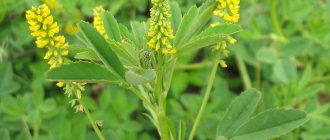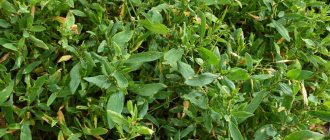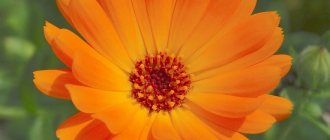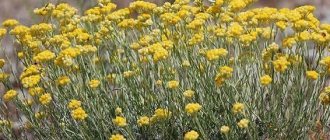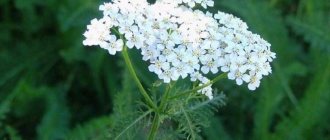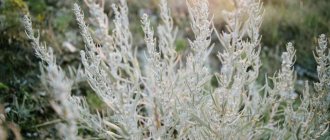Shepherd's purse plant description, photo, herb medicinal properties and contraindications, in gynecology
Latin name Capsella bursa-pastoris (L.) Medik.
Other names. Bag man, grytsyki, money, hearts, wallet.
Family Cruciferae
The genus of purses is quite small, consisting of only 3 species: the common shepherd's purse, the eastern and the Hyrcanian. The common one is more widespread than others. We see it in fallow fields, along roads, on borders, and sometimes in vegetable gardens as one of the indispensable settlements of inhabited lands.
Common shepherd's purse
This plant could be called the “Cinderella of flora.” You won’t see it either at a flower ball or at a fruiting feast, although everyone is familiar with the shepherd’s purse. In the spring, when it has barely dried out after the flood, in the newly awakened herbs one can already come across small arrows of our grass, dotted with fawn petals on top. And now, after a whole summer, the stubborn grass not only does not disappear, but also grows significantly and is abundantly covered with triangular pods of fruit. Flowers are still visible at the top of the stems! It is quite possible that this is no longer the same plant that we saw in the spring. After all, shepherd's purse, like a true weed, is amazingly tenacious: winter forms even go under the snow with flower clusters in order to take hold of their strength early in the spring. It is impossible to confuse the shepherd's purse with any other plant, the whole appearance of the shepherd's purse is so unique, especially at the time of fruiting. A triangular pod with a dent in the middle, like an antique shepherd's purse. It’s not for nothing that this herb has a scientific name (Capsella—a diminutive of capsa (bag, sack). In Russian dialects, shepherd’s purse is also called purse (again, because of the fruits that resemble a purse). “Hearts” have the same meaning. Species definition bursa-pastoris, derived from the Greek bursa (bag, literally "skin", since shepherd's bags were made from animal skin) and pastoris (from pastor - shepherd), characterizes the shape of the fruit.
What does a shepherd's purse look like?
Appearance of a shepherd's purse.
Photo: Yandex.Pictures Shepherd's purse is an annual herb from the cruciferous (cabbage) family. It has an erect, single or branched stem with a height of 40 to 60 centimeters.
The basal leaves are large, elliptical in shape, entire, notched-toothed, turning into a petiole. The stem leaves are arrow-shaped, with smooth edges. The higher the leaves are, the smaller they become.
The flowers are small, unattractive, white. Located on spaced stalks, densely collected in an elongated raceme, greatly lengthening during fruiting.
Shepherd's purse blooms from early summer until late autumn. The fruits ripen at different times starting in May. The fruit is an inverse triangle-shaped pod with a heart-shaped notch on the upper side.
The shape of the fruit is reminiscent of the shoulder bags worn by Western European shepherds in the 18th century. This was the reason for the name of the plant.
The life cycle of the plant is short. Shepherd's purse is an extremely fruit-bearing and tenacious plant. Young shoots quickly turn into adult plants. In one summer, the grass can produce four generations, dispersing tens of thousands of seeds.
Seeds remain viable for up to six years. Plants that sprouted from seeds in late autumn do not die in winter, but continue to live in the spring of next year.
Description, reproduction and distribution area of the shepherd's purse
An annual or biennial plant of the cruciferous family (Cruciferae), up to 60 cm high, with a thin spindle-shaped root.
The stem is single, erect, simple or branched. The basal leaves in rosettes are initially entire, and then pinnately divided with triangular toothed lobes, on petioles; stem - sessile, entire, stem-encompassing.
The flowers are small, white, collected in a vertical straight raceme, which lengthens during the growing season of the plants.
The fruit is a pod, obverse-triangular-heart-shaped, flattened. The seeds are numerous, small, ellipsoid, yellowish-brown.
Shepherd's purse blooms from the second half of April until autumn, the fruits ripen from May to autumn.
In warm, humid autumn, seeded plants often resume their growing season and bloom again. One plant produces from 2,000 to 65,000 seeds per year, which retain field germination for up to 6 years.
Propagated by seeds.
The shepherd's purse is widespread throughout the CIS, with the exception of the Far North and desert regions of Central Asia. It grows in wastelands and pastures, like a weed in vegetable gardens and crops. It is especially abundant in fallow lands, vegetable gardens, young orchards and forest plantations. During the summer, 2-4 generations of shepherd's purse grow, and in addition, there are also winter forms.
Winter forms of shepherd's purse grow in large numbers in crops of winter rye, clover and clover with timothy. The spring form is common in crops of pea-vetch-oat mixtures and in potato fields. The plant develops better in clarified agrophytocenoses on loose soils rich in nitrate nitrogen.
It has been known in traditional medicine of Greece and Rome since ancient times. Doctors of Ancient Greece used it as a mustard plant. Ancient doctors were more interested in seeds. In the Middle Ages it was used as a hemostatic agent for internal bleeding and kidney diseases.
History of plant use
Although the plant is considered a malicious weed, this in no way detracts from its medicinal properties. They were known back in Ancient Greece and Rome. In Europe in the Middle Ages it was used as a hemostatic agent.
Interest in the plant arose again during the First World War, when the need for hemostatic agents increased sharply. The entire aerial part of the shepherd's purse is used in medicine.
You can cook green cabbage soup and borscht from young and fresh leaves of the herb. The plant is also suitable for preparing vitamin salads. Ground seeds can replace mustard or pepper.
Chemical composition
Basal leaves of shepherd's purse. Photo: Yandex.Pictures
- Carbohydrates and related compounds are found in the plant: sucrose, sorbose, lactose, sorbitol, mannitol, adonitol, aminosucrose.
- Shepherd's purse contains malic, citric, tartaric and organic acids, up to 3% tannins, saponins, bursin alkaloid and essential oil.
- Coumarins, flavonoids, choline, acetylcholine, tyramine, phytoncides, ascorbic acid, vitamin K, rutin, a lot of potassium and phosphorus, iron, copper, chromium, manganese, aluminum, cobalt, titanium were also found.
- The seeds of the plant are rich in fatty oils - from 28 to 30%. They also contain resins, small amounts of allyl mustard oil and ascorbic acid.
Medicinal use
- Shepherd's purse preparations are effective for various internal bleedings. They cause uterine contractions, lower blood pressure, and constrict peripheral blood vessels.
- Infusions of shepherd's purse stop diarrhea and increase urine output.
- In homeopathy, plant-based preparations are used for all types of bleeding and kidney diseases.
- In Indian medicine - as an astringent, diuretic, antiscorbutic. Shepherd's purse is used for hematuria, ascites, and diarrhea.
- Freshly ground herb is used for compresses for bruises.
- Preparations based on the plant have analgesic, wound healing, antiemetic and antitoxic effects. They enhance intestinal motility and have high phytoncidal activity.
- In Tibetan medicine, the herb is considered the best remedy for stopping hiccups.
- In scientific medicine, infusion and liquid extract of the plant are used in gynecological practice for uterine atony, as a sedative for neuropsychiatric diseases.
Application
The plant is used as food for rabbits.
Food use
In some countries, shepherd's purse is a garden plant; its grass is used to prepare borscht, soups, purees, fresh and dry. Young leaves are used as food for preparing salads, borscht, soups, in the form of puree as a filling for pies, for pickling along with other herbs and vegetables. The leaves are dried for future use (at 100-120°C) and added to first courses. Ground seeds are used instead of mustard
Shepherd's purse medicinal properties, medicinal uses
In scientific medicine, infusion and liquid extract are used in gynecological practice.
A good hemostatic agent after childbirth, abortion, during menopause, and with uterine fibroids. In homeopathy it is used for all types of bleeding and kidney diseases. In India it is used as an astringent, diuretic, antiscorbutic, for hematuria, ascites, and diarrhea. In folk medicine it is used for malignant ulcers and stomach cancer, tumors, cancer and fibroids of the uterus, as a contraceptive. Shepherd's purse delays ovulation and has antibacterial properties. P,S. used in official medicine in many European countries, was included in the VIII and IX editions of the Russian Pharmacopoeia. Infusion and liquid extract of the herb are prescribed for uterine atony and as a hemostatic agent. In China they are used for dysentery and eye diseases, in Mongolia - as a sedative for neuropsychiatric diseases and a wound healing agent. In folk medicine, a decoction of the herb is prescribed for dysentery, gastritis, bleeding, pulmonary tuberculosis with hemoptysis (mixture with oak bark 2:1), malaria, heart disease, liver disease, gynecological and venereal diseases, osteoalgia, vomiting, colds, metabolic disorders , for the treatment of purulent wounds. Herbal extracts lower blood pressure, enhance intestinal and uterine motility, and accelerate blood clotting. An infusion of the herb is prescribed as a hemostatic agent for uterine cancer. Used externally for nosebleeds. In Eastern medicine, the plant was considered an antiemetic. The leaves are used as an astringent and antiscorbutic, for diseases of the ureters and malaria. The seeds are used in India as an astringent, stimulant, antiscorbutic, diuretic, and for ascites. A decoction of the seeds is used as an astringent, stimulant, antiscorbutic, diuretic, and for ascites; water and alcohol extracts have antibacterial properties. Fresh herb juice is a strong hemostatic and mild antihypertensive agent (20-30 drops 4-5 times a day). An infusion of the herb is used for diarrhea, especially bloody diarrhea, cholelithiasis and kidney stones, gout and rheumatism.
Collection and processing of medicinal raw materials
Collection item. Grass.
Collection and processing of raw materials. The grass is collected during flowering, in dry weather, after the dew has dried, cut with a knife or pruning shears no more than 40 cm long from the top; placed without compaction in a basket and immediately sent to dry. It is unacceptable to collect plants with ripe (opened) fruits, as well as plants affected by fungus (with a white coating on the leaves).
The raw materials are placed in containers and dried as quickly as possible.
Drying. Dry the grass in the open air, in the shade in the wind, as well as under sheds or in attics under an iron roof with good ventilation, laying it out loosely in a thin layer.
In good weather, you can dry it outdoors for 5-7 days. Quality of finished raw materials. The raw material is the dried flowering aerial part of the plant with leaves, flowers and unripe fruits from 10 to 40 cm in length. The color of the stems, leaves, and fruits is green, the smell is weak, the taste is bitter. Humidity - no more than 13%; total ash - no more than 10%, ash insoluble in a 10% solution of hydrochloric acid - no more than 2%; foreign impurities: organic - no more than 2%, mineral - no more than 1%. Output of finished raw materials. Approximately 26-28%.
Store in a dry, ventilated area in a cardboard container for 3 years.
Application in official and folk medicine
Preparations of shepherd's purse have a hemostatic and astringent effect, increase the tone of the uterus and smooth muscles of the intestine. The plant has long been used as a hemostatic agent. It is especially effective when used as an infusion for uterine and other bleeding. The astringent properties of the plant are used in the treatment of acute and chronic inflammatory bowel diseases, gastric and duodenal ulcers. Shepherd's purse is sometimes used for diseases of the liver and gall bladder and as an antidiarrheal agent. The infusion can be used for bladder diseases, hemorrhoids and as an antiemetic. Due to its significant content of microelements, especially copper, zinc, manganese and chromium, combined with macroelements such as iron, magnesium, potassium and calcium, the herb can be useful for metabolic disorders.
In folk medicine, the plant is used to lower blood pressure, for wounds, cuts and purulent ulcers. There are indications of the effectiveness of shepherd's purse infusion for typhoid fever. To prepare the infusion, pour 10 g of herb into 1 glass of hot water, leave for 30 minutes and filter through two or three layers of gauze. Take 1 tablespoon 3-4 times a day 20 minutes before meals. Liquid extract of shepherd's purse is prescribed 20-25 drops 2-3 times a day before meals. Fresh juice from the grass in a 1:1 dilution is used as a hemostatic agent. It is instilled into both nostrils for nosebleeds. Undiluted juice is indicated in the form of lotions and compresses for bruises and minor wounds.
Based on the book Phytotherapy
Capsella bursa pastoris L., cruciferous family.
Common names: peasant mustard, heart grass, spoons.
A characteristic feature of this biennial herbaceous plant is a basal rosette of planar-toothed leaves that are spread on the ground or raised. The erect stem can be 20-40 cm in height. The stems can be branched and simple, with few sessile leaves. Blooms and bears fruit all season. On the same plant there are simultaneously buds in the upper part, and blooming four-membered flowers below, and triangular fruits - reverse-heart-shaped pods on legs - even lower. Blooms from March to November.
It is found as a weed in gardens, on arable land, on gravelly places, on roads and slopes, in meadows and pastures overgrown with wild cereals, wastelands and even on walls. It can be collected all year round, but the most favorable time for collecting is the spring months. The plant is pulled out by the roots, freed from adhering soil and hung in bunches to dry in the shade.
Shepherd's purse has a hemostatic effect. Shepherd's purse herb is used in various mixtures and in the form of preparations that are used against ailments associated with menstruation. Shepherd's purse is also contained in so-called blood purification preparations. Recently, information has appeared about the effect of shepherd's purse herb on the functioning of the cardiovascular system. Its effect is similar to that of mistletoe - leveling and regulating for a weakened heart, especially in older people.
Traditional medicine uses shepherd's purse for diseases of the liver and biliary system. As an external rinse and rinse, it has gained a strong position as a remedy against oral infections and for the treatment of poorly healing wounds.
Shepherd's purse in folk medicine
Photo: Yandex.Pictures
- In folk medicine, shepherd's purse, its infusion and fresh juice are used for pulmonary hemorrhages, malignant ulcers and stomach cancer, tumors, cancer and uterine fibroids.
- The infusion helps with dysentery, gastritis, pulmonary tuberculosis, malaria, kidney diseases, gynecological diseases, and colds. The plant can be used to treat purulent wounds.
- Shepherd's purse extract accelerates blood clotting and delays ovulation.
- In folk medicine, freshly squeezed juice from the plant is drunk for kidney and bladder diseases.
- The juice of the herb neutralizes medicinal substances that accumulate in the body in chronic patients when taking medications for a long time. To cleanse the body, drink fresh herb juice 30–40 drops 3 times a day with water.
Application of the herb
The plant is used in the following areas:
- medicine;
- cooking.
For medicinal purposes, you can successfully use herbal raw materials purchased at the pharmacy
In medicine
In folk medicine, plant materials are used for:
- reducing blood pressure;
- stopping internal bleeding (pulmonary, gastrointestinal, renal, etc.);
- blood purification;
- relief from endometriosis.
Used to treat wounds, cuts, eczema, vasculitis, feverish conditions, as well as pathologies:
- liver;
- kidney;
- Bladder;
- biliary system;
- Gastrointestinal tract (diarrhea).
In cooking
The plant is used in soups, salads, purees, and pie fillings in fresh or dry form. It is salted, dried and, in a ground state, used as a seasoning or mustard powder.
Recipes:
- Soup. You need to prepare a meat broth, place peeled and chopped potatoes in water and boil until soft. The leaves are cut, fried in oil with onions, and placed in the soup. The dish is infused and seasoned with fresh herbs. The quantity of products is optional, depending on the volume of the finished dish.
- Puree. It is necessary to wash the fresh leaves, chop them to a paste, add pepper, spices and salt. The composition is thoroughly mixed and stored in the refrigerator. The puree is used as a dressing for liquid and vegetable dishes and roasts.
- Paste. You will need bagwort (50 g), celery rhizome (30 g). The products are crushed and ground to a paste, add mustard powder (1 tbsp), salt, mix with butter (50 g). The paste is used to make sandwiches.
- Caviar. You need bagwort (200 g), carrots (1 pc.), onions (1 pc.), tomato paste (0.5), vegetable oil (3 tbsp.). The plants are washed, chopped, and fried in oil. The onions are fried separately. The grass and carrots are passed through a meat grinder and included in the roast. The ingredients are mixed and simmered with tomato sauce for about 20 minutes.
- Powder. You will need to dry the leaves of the plant, chop and sift. Add crushed red pepper to the composition in the proportion of 1 tsp. for 2 cups of mixture. The powder is used as a seasoning for hot dishes.
- Marinade. Bagworm (300 g), soy sauce (200 g), vegetable oil (5 g), sugar (10 g), onions (10 g), fried sesame seeds (3 g), ground red pepper (5 g). The rhizome and leaves are washed and dried. The onion needs to be chopped. The remaining ingredients are mixed and the herbs are added. The composition is infused for up to 3 days.
shepherd's purse is successfully used not only in medicine, but also in cooking, enriching various dishes with its beneficial substances
The bag can be used as a substitute for mustard powder. You will need to grind the seeds of the plant, which have a bitter taste and delicate aroma. The seasoning is suitable for fish dishes, meat, soups, etc.
The following salad recipes are in demand:
- Leaves and stems (1 handful) are washed, chopped and mixed with chopped walnuts (4 tbsp).
- Leaves (40 g), fresh cucumbers (20 g), tomatoes (15 g), medium fat sour cream (10 g), salt. The bag and vegetables are cut, placed in a container and salted. You can decorate the dish with boiled eggs, cut into circles, and sour cream.
- Nettle leaves (10 g), bagwort (50 g), wild chicory (5 g), sorrel (10 g), green onion (4 g), boiled egg (1/2 pc.), sour cream (5 g), vegetable or olive oil (5 g), salt and mustard (3 g). The components are chopped and mixed with sour cream and mustard. The dish is seasoned with oil and salted.
In gynecology
The plant is used to treat female diseases and normalize the body’s hormonal levels, so the extract is included in medicinal teas, medications, and dietary supplements.
The medicinal properties of purseweed in gynecology are used for:
- Menstruation that occurs irregularly, with disruptions. If menstruation is delayed, you can use fresh juice or infusion of the leaves of the plant. Regular use of the herb during menstruation helps stabilize cycles.
- Heavy menstruation. You can include herbal teas and infusions in your diet that will help stabilize the functioning of the female organs.
- The presence of inflammation and pain during menstruation.
- Menopause infusions and decoctions will help reduce the intensity of high blood pressure.
In addition, during the postpartum period, using bagel can reduce the likelihood of uterine bleeding, improve the condition of the immune system and eliminate inflammation.
To prepare home remedies, you can use pharmaceutical or self-prepared raw materials
Traditional medicine recipes
For medicinal purposes, shepherd's purse is used along with the stem, leaves, flowers and fruits.
Infusion for the treatment of bladder diseases
- Take 40–50 grams of raw shepherd's purse and pour a liter of boiling water. Wrap and leave for half an hour. Drink the infusion 2-3 times a day, 70 ml.
Hemostatic agent
- Pour one tablespoon of dry shepherd's purse herb into a glass of boiling water. Leave for two hours, strain. Take two tablespoons 4 times a day.
- Liquid extract of shepherd's purse herb (pharmacy) take 25 drops 4-5 times a day.
For liver diseases
- Shepherd's purse, its fresh juice helps with liver diseases and malignant ulcers. For medicinal purposes, it is recommended to take fresh herb juice 40 drops with water 3 times a day.
For rectal prolapse
- Wash the grass, chop it and pour it into a half-liter dark bottle. Fill 3/4 of the volume, add vodka and leave in a dark, warm place for 2 weeks. Use to wash the anus several times a day.
Nose bleed
Photo: Yandex.Pictures
- For nosebleeds as a result of injury or any illness, take 2-3 teaspoons of the dry mixture and pour 200 ml of boiling water. Let it brew for 10 minutes. Strain and drink from 400 to 800 ml of infusion daily.
Shepherd's purse for bone pain
- For bone pain, which occurs with rheumatism, blood diseases, intoxication, and feverish conditions, take 2 teaspoons of shepherd's purse juice with honey 5-6 times a day after meals. The juice should be squeezed from the above-ground parts of young plants.
The recipe cannot be used for thrombophlebitis and pregnancy.
Infusion for treating wounds
- This infusion is for external use for bruises, for treating wounds and cuts. Take 3 tablespoons of dry crushed raw materials and pour a glass of boiling water. Leave for an hour, then strain.
For tendon inflammation
- People of certain professions - stenographers, typists, pianists - often suffer from inflammation of the tendons. For treatment, you can use lotions and compresses from an infusion of shepherd's purse herb. Pour 200 ml of boiling water over a tablespoon of dry herb and let it brew for two hours. Strain the resulting infusion.
Collection, preparation and drying of shepherd's purse
The aerial part (herb) (Herba bursae pastoris) is used as a medicinal raw material. Collection is carried out during the flowering of the shepherd's purse, in dry weather, after the dew has dried, by cutting the grass with a knife or pruning shears or pulling it out by the roots along with the rosette of leaves. The roots are then cut off and discarded.
It is unacceptable to collect plants with ripe (opened) fruits, as well as plants affected by fungus (with a white coating on the leaves). When collecting shepherd's purse, the admixture of field grass (Thlaspi arvense L.), which often grows with it, is not allowed.
Unlike the shepherd's purse, the leaves of the basal rosette are elongated, obovate, obtuse, and die off early; the fruits are round-elliptical with a narrow notch at the top.
Dry the shepherd's purse under sheds or in attics under an iron or tiled roof with good ventilation, spreading it loosely in a thin layer up to 5-7 cm thick on paper or fabric. In good weather, the grass dries out in 5-7 days. You can also dry it outdoors, in the shade. Its end is determined by the fragility of the stems. Dry in dryers at a temperature not exceeding 45 °C. The shelf life of raw materials is 3 years. The smell of raw materials is weak, the taste is bitter.


